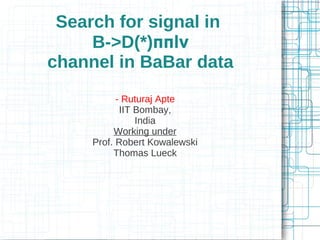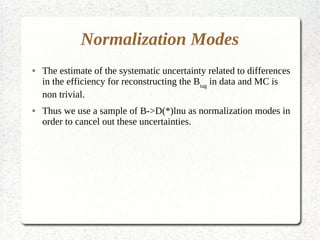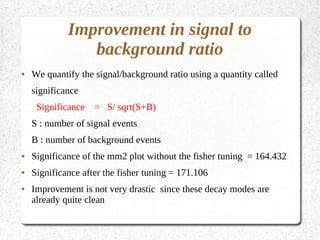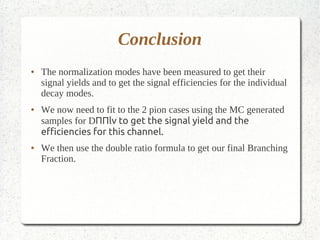This document describes a search for the semileptonic B decay channel B->D(*)ππlν in BaBar data. Key steps included reconstructing a Btag meson, using normalization modes to reduce uncertainties, applying a multivariate Fisher analysis to improve signal-to-background ratio, and fitting the (missing mass)2 distribution to extract signal yields. Preliminary results were presented for normalization channels, with the next steps being to fit the Dππlν channel and calculate its branching fraction using a double ratio method.































